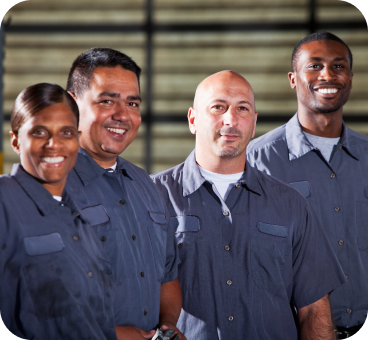How to Train and Onboard Restoration Technicians Quickly



When you need to learn something new, you probably do what everyone does: pull out your phone and Google it.
How to fix a leaky faucet? YouTube’s got you. How to boil the perfect egg? There’s a video with three million views and a surprising amount of drama in the comments.
But if you're trying to train and onboard restoration technicians quickly, things get trickier.
There’s no search result for “how your company sets up containment” or “where we keep the moisture meters.”
So new techs do what they can: call their manager, text a senior tech, or guess their way through the job.
And that’s the real issue—it’s not the doing that slows things down. It’s the not knowing.
The hidden cost of poor onboarding shows up in job-site delays, costly rework, and a team that never truly levels up their skills. Onboarding a single water tech can cost restoration companies as much as $13,000 during an 8-week period when you factor in labor costs, wasted materials, and time lost to preventable mistakes.
So how do you train and onboard restoration technicians quickly without relying on guesswork or crossed fingers?
Let’s break it down.
5 Proven Strategies to Cut Technician Training and Onboarding Time in Half
1. Create a Standardized Onboarding Roadmap

Most restoration companies typically run onboarding like medieval medicine: some shadowing here, a little guesswork there, and a whole lot of praying it works out. With every trainer doing things differently, new techs end up with mixed messages and unclear expectations. That confusion slows learning and erodes confidence.
What works instead is a standardized, step-by-step roadmap. A clear, day-by-day plan that shows exactly what new technicians need to learn, when they'll learn it, and how progress will be measured.
That means week-by-week goals, equipment walkthroughs, safety protocols, and built-in checkpoints with skills testing that reinforce retention.
A strong onboarding roadmap also includes clarity around job roles, core company values, and what long-term success and growth look like in the role.
Companies that implement onboarding roadmaps typically see a significant reduction in ramp-up time. Why? Because when technicians can visualize their learning journey, they stop wondering what’s next and start focusing on the task in front of them.
2. Build Point-of-Need Resources That Actually Work

Even the best roadmap won’t anticipate every question on the job. And when techs get stuck, waiting for a manager to call back isn’t a solution. It’s a slowdown that drains morale, slows jobs, and makes the company vulnerable when those key people—and all the knowledge in their heads—leave.
That’s why field-ready, point-of-need support is essential. Think step-by-step photo guides, SOPs optimized for mobile devices, troubleshooting videos, and quick-reference flows that work offline.
Companies using this model typically report fewer escalations to management and a sharp drop in costly errors. It’s the difference between “let me get back to you tomorrow” and “give me two minutes.”
3. Use Visual Learning to Train Restoration Technicians Faster

Restoration is visual. Hands-on. Situational. And restoration training should reflect that.
Lecture-style onboarding and outdated thick binders don’t match how people actually learn on the job. Research shows that most people forget 70% of what they learn within 24 hours if they don’t make any effort to retain it.
The same study also shows that visual learning—before/after walkthrough photos, annotated process maps, real-world video examples, and even augmented reality tools—helps improve retention significantly.
When people can see what “good” looks like, they retain it. They mimic it, and they build judgment faster.
The more you match your training to the way restoration is actually performed, the faster new hires learn, and the more confident they become in the field.
4. Implement Just-in-Time Training for Faster Restoration Technician Onboarding

New hires don’t need to learn everything on Day 1. Trying to teach it all upfront often backfires.
The best companies break onboarding into just-in-time training modules that meet technicians where they are, when they need it.
You can start with core safety procedures on Day 1. Then, layer equipment setup in Week 1. Add advanced tools or specialty drying techniques only when they’re relevant to the job at hand—like walking a tech through negative pressure setup the day before a containment-heavy mold job, not during week one when they’re still learning how to read a moisture map.
This method respects the learning curve and prevents cognitive overload.
Companies using just-in-time training can reduce onboarding time in half while simultaneously improving knowledge retention and application in the field. This approach also communicates respect because you’re not drowning new hires in expectations, and they’re being equipped as they go, which builds trust and confidence in your system.
5. Connect the “Why” to the “How”

Procedures tell technicians what to do. But understanding why a process matters? That’s where real learning begins.
Without context, restorers may skip steps, improvise too early, or miss critical indicators. But when they know the “why”—why moisture behaves the way it does, why containment matters, what happens if readings are skipped—they make smarter decisions in the field.
Teams that connect restoration science to SOPs see not only better project outcomes but also longer employee retention. Technicians who feel competent and trusted tend to stay longer, speak more highly of their employer, and take more ownership over their work.
Making Onboarding and Training Work: Implementation Is Everything
Building a better onboarding system won’t happen overnight. But you don’t need to be perfect to get started.
Start by documenting your current processes, even if they’re messy. Bring in your top-performing techs to help because they’re your most valuable source of real-world knowledge. Choose tools like KnowHow that let you deliver on-the-job training, track learning progress over time, and document your company’s knowledge.
The goal isn’t just faster training and onboarding. It’s turning new hires into confident, capable technicians who contribute quickly and grow with your company.
Bottom Line: Standardised Training and Onboarding Are a Competitive Advantage
The most successful restoration companies aren’t just better at drying structures or operating the fanciest equipment. They’re better at training people. Period.
When you train and onboard restoration technicians quickly, with clarity and consistency, you get fewer callbacks, stronger margins, and a team that performs under pressure.
Want to see what structured training and onboarding could look like in your company? Book a demo with KnowHow and cut your training time in half without sacrificing on-the-job quality.









